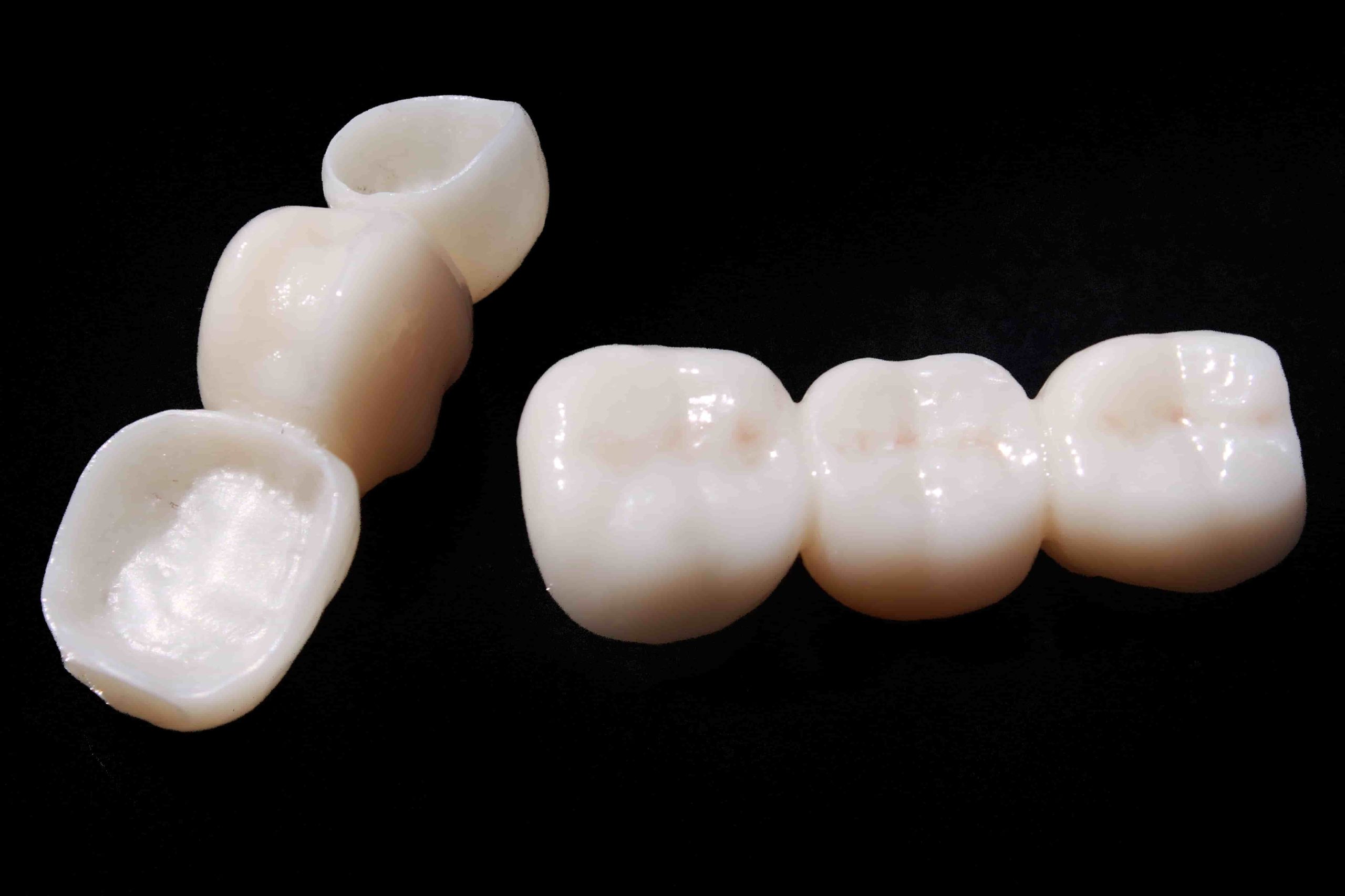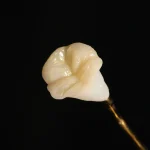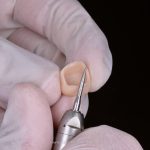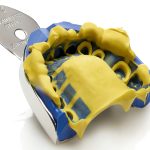2
Aug
Impressions for BOPT (Biologically Oriented Preparation Technique): the principles of dental preparation

BOPT (Biologically Oriented Preparation Technique) involves the vertical preparation of the tooth stump to allow the mucosa to adapt to the prosthetic contours of crowns. [1.2]
It is a dental preparation protocol in which diamond burs are used to eliminate the emergence of the natural tooth at the cemento-enamel junction. This allows the subsequent fabrication of a prosthetic crown that can help the gingival tissues to grow and stabilise around the cervical area. [1,3,4]
Eliminating the convexity of the cemento-enamel junction by inserting the bur into the sulcus creates bleeding. With BOPT, by taking special measures when creating and managing the contours of the provisional device, it is possible to stabilise the clot. As soon as the tissue has healed completely, a final impression can be taken. [5.6]
The phases of BOPT
We will take a closer look at this technique. [1]
Preparation
- After probing to establish the distance between the epithelial attachment and the margin, the preparation of the supergingival part can commence.
- Then, holding the bur obliquely, it is introduced into the gingival sulcus, working both on the tooth, focusing above all on the convexity of the cemento-enamel junction, and on the gingival tissue, which is intentionally slightly damaged using a technique known as “gingitage” [7].
- The two preparations (sub- and supergingival) are combined in one as vertical as possible preparation. The emergence of the CEJ is therefore eliminated, which allows the technician to manage the emergence of the crown also from a vertical point of view.
Provisional restoration relining
This technique involves the use of a carefully emptied, prefiled provisional restoration that follows the gingival margin properly.
- Once the tooth has been isolated, the provisional restoration is relined with methacrylic resin. The provisional restoration now has two distinct lines: the inner preparation margin and the external portion of the gingival margin.
- The empty space between the two lines is the cornerstone of the relining technique. This space, on the vestibular face, is filled with fluid resin or flowable composite.
- The excess is then removed to connect the preparation margin of the crown with the gingival margin.
- A new angular component, the new CEJ, is introduced by managing its depth at no more than 0.5-1 mm, in order to respect the biological distance (controlled invasion of the sulcus).
- After thorough polishing, the provisional restoration is cemented.
The stabilisation of the clot obtained by gingitage in the new space, and its maturation mean that as they heal the gingival tissues adapt to the new emergence anatomy of the provisional restoration and acquire structure and thickness.
Final impression
Four weeks after preparation, the tissues will be perfectly healed and it will be possible to take the final impression.
The absence of a finish line makes the impression phase simpler. It is strongly recommended to use a double displacement cord, in order to improve the reading of the gingival sulcus.
Laboratory
- In the laboratory, the dental technician is able to observe the gingival margin, position it on the abutment and check the apical margin of the gingival sulcus (discarding the model).
- Based on the position of these two lines, they can arbitrarily decide where to position the crown margin (again without invading the biological space).
- The emergence contour of the crown is managed using the model without the gingival margin, so that it is the tissues that adapt to the emergence profile and not vice-versa.
- The crown is then tried on the model with the gum, before being evaluated and modified based on the three dimensional relationship with the gingival margin.
Hydrorise System: the top-of-the-range silicone for precision impressions
One of the Zhermack solutions for precision impressions is Hydrorise System: a range of addition silicones with high performance, for impression taking on implants and natural stumps.
Formulated for professionals seeking excellent technical characteristics, Hydrorise System is the top of the Zhermack range and offers an extensive variety of solutions for all clinical situations.
Hydrorise is a highly hydrocompatible silicone that achieves an accuracy of 5 microns in detail reproduction.
References
[1] Loi, I., & Di Felice, A. (2013). Biologically oriented preparation technique (BOPT): a new approach for prosthetic restoration of periodontically healthy teeth. Eur J Esthet Dent, 8(1), 10-23.
[2] ALL’INTERNO, D. Q. D. T., & DEI CONTENUTI, I. R. A. BOPT technique.
[3] Agustín-Panadero R, Solá-Ruíz MF. Vertical preparation for fixed prosthesis rehabilitation in the anterior sector. J Prosthet Dent. 2015;114:474-8.
[4] Agustín-Panadero, R., Martín-de Llano, J. J., Fons-Font, A., & Carda, C. (2020). Histological study of human periodontal tissue following biologically oriented preparation technique (BOPT). Journal of Clinical and Experimental Dentistry, 12(6), e597.
[5] García-Gil, I., de la Calle, C. P., Lopez-Suarez, C., Pontevedra, P., & Suarez, M. J. (2020). Comparative analysis of trueness between conventional and digital impression in dental-supported fixed dental prosthesis with vertical preparation. Journal of Clinical and Experimental Dentistry, 12(9), e896.
[6] Agustin-Panadero R, Serra-Pastor B, Fons-Font A, Sola-Ruiz MF. Prospective Clinical Study of Zirconia Full-coverage Restorations on Teeth Prepared With Biologically Oriented Preparation Technique on Gingival Health: Results After Two-year Follow-up. Oper Dent. 2018;43:482-7.
[7] Ingraham, R., Sochat, P., & Hansing, F. J. (1981). Rotary gingival curettage–a technique for tooth preparation and management of the gingival sulcus for impression taking. The International journal of periodontics & restorative dentistry, 1(4), 8-33.
Do you want more information on Zhermack Dental products and solutions?
Contact us




 Zhermack SpA has been one of the most important producers and international distributors of alginates, gypsums and silicone compounds for the dental sector for over 40 years. It has also developed solutions for the industrial and wellbeing sectors.
Zhermack SpA - Via Bovazecchino, 100 - 45021 Badia Polesine (RO), Italy.
Zhermack SpA has been one of the most important producers and international distributors of alginates, gypsums and silicone compounds for the dental sector for over 40 years. It has also developed solutions for the industrial and wellbeing sectors.
Zhermack SpA - Via Bovazecchino, 100 - 45021 Badia Polesine (RO), Italy.


